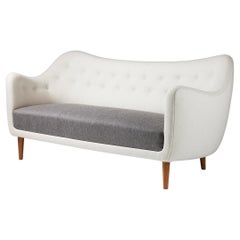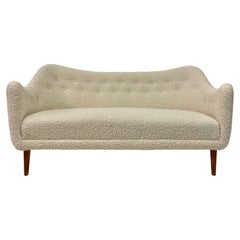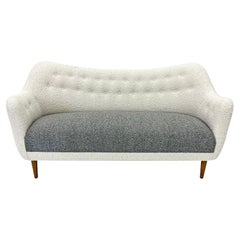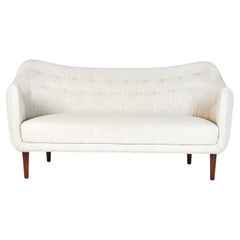Finn Juhl Bo64
Mid-20th Century Danish Mid-Century Modern Sofas
Wool, Wood
Mid-20th Century Danish Mid-Century Modern Sofas
Bouclé, Beech
Vintage 1940s Danish Mid-Century Modern Sofas
Bouclé, Beech
Recent Sales
Vintage 1950s Danish Scandinavian Modern Settees
Fabric, Teak
Vintage 1950s Danish Scandinavian Modern Sofas
Vintage 1950s Danish Scandinavian Modern Sofas
Vintage 1940s Danish Scandinavian Modern Sofas
Wool
Vintage 1940s Danish Scandinavian Modern Sofas
Vintage 1940s Danish Scandinavian Modern Sofas
Wool, Linen, Beech, Fabric
Vintage 1960s Danish Scandinavian Modern Dining Room Chairs
Leather, Beech
Vintage 1950s Danish Scandinavian Modern Sofas
Mid-20th Century Danish Mid-Century Modern Sofas
Bouclé, Beech
Vintage 1940s Danish Mid-Century Modern Loveseats
Teak, Wool, Upholstery
Mid-20th Century Danish Mid-Century Modern Dining Room Chairs
Teak, Leather
Vintage 1940s Danish Scandinavian Modern Sofas
Fabric, Beech
People Also Browsed
Vintage 1950s Italian Mid-Century Modern Chairs
Velvet
Mid-20th Century French Mid-Century Modern Wall Lights and Sconces
Iron
21st Century and Contemporary Brazilian Modern Carts and Bar Carts
Steel
21st Century and Contemporary Swedish Mid-Century Modern Table Lamps
Textile
21st Century and Contemporary Portuguese Mid-Century Modern Sofas
Brass
2010s French Post-Modern Chairs
Fabric, Beech
Mid-20th Century Danish Scandinavian Modern Table Lamps
Copper
Vintage 1970s Italian Mid-Century Modern Chandeliers and Pendants
Metal
Vintage 1950s Danish Scandinavian Modern Sofas
Leather, Teak
Mid-20th Century Italian Mid-Century Modern Lounge Chairs
Brass
Vintage 1950s German Mid-Century Modern Stools
Metal
21st Century and Contemporary Finnish Scandinavian Modern Floor Lamps
Brass
21st Century and Contemporary Danish Mid-Century Modern Wall Mirrors
Brass
Vintage 1950s Italian Mid-Century Modern Chandeliers and Pendants
Brass
Vintage 1970s Swiss Mid-Century Modern Sofas
Leather
2010s Danish Scandinavian Modern Dining Room Chairs
Oak
Finn Juhl Bo64 For Sale on 1stDibs
How Much is a Finn Juhl Bo64?
Finn Juhl for sale on 1stDibs
Along with Hans Wegner, Arne Jacobsen and Børge Mogensen, Finn Juhl was one of the great masters of mid-20th-century Danish design. Juhl was the first among that group to have his work promoted overseas, bringing the character of the nation’s furnishings — and the inherent principles of grace, craftsmanship and utility on which they were based — to an international audience.
A stylistic maverick, Juhl embraced expressive, free-flowing shapes in chair, credenzas and sofa designs much earlier than his colleagues, yet even his quietest pieces incorporate supple, curving forms that are at once elegant and ergonomic.
As a young man, Juhl hoped to become an art historian, but his father steered him into a more practical course of study in architecture. He began designing furniture in the late 1930s, a discipline in which, despite his education, Juhl was self-taught, and quite proud of the fact.
Juhl’s earliest works, designed in the late 1930s, are perhaps his most idiosyncratic. The influence of modern art is clear in his 1939 Pelican chair: an almost Surrealist take on the classic wing chair. Critics reviled the piece, however; one said it looked like a "tired walrus." Juhl had tempered his creativity by 1945, when the workshop of Danish cabinetmaker Niels Vodder began to issue his designs. Yet Juhl’s now-classic NV 45 armchair still demonstrates panache, with a seat that floats above the chair’s teak frame.
Juhl first exhibited his work in the United States in 1950, championed by Edgar Kaufmann Jr., an influential design critic and scion of America’s most prominent family of modern architecture and design patrons. (Kaufmann’s father commissioned Frank Lloyd Wright’s design of the house “Fallingwater.”)
Juhl quickly won a following for such signature designs as the supremely comfortable Chieftan lounge chair, the Judas table — a piece ornamented with stylish inlaid silver plaquettes — and the biomorphic Baker sofa. After an article authored by Kaufmann on Juhl and his work appeared in the U.S.-based magazine Interiors in 1948, he began receiving American commissions.
Kaufmann commissioned Juhl to create the exhibition design for, and contribute pieces to, the 1951 edition of the Good Design shows he organized for MoMA and Chicago’s Merchandise Mart. Baker Furniture asked Juhl to design for the firm, and he produced a collection of chairs, tables and cabinets, and, later, the 1957 sofa.
Scandinavian modernist seating, such as the chairs and sofas Juhl created for Baker, became immensely popular in postwar America, as the seeds of the Scandinavian style that Juhl sowed took root and spread in the United States. Juhl and his work featured prominently in the landmark show “Design from Scandinavia,” which opened in 1954 at the Virginia Museum of Fine Arts and traveled to 24 museums in the U.S. and Canada; over three years, it was seen by more than a million people.
Juhl’s furniture — as well as his ceramics, tableware and accessories — has an air of relaxed sophistication and elegance that is unique in the realm of mid-century design.
Find vintage Finn Juhl armchairs, coffee tables, desks and other furniture for sale on 1stDibs.
Finding the Right Sofas for You
Black leather, silk velvet cushions, breathable bouclé fabric — when shopping for antique or vintage sofas, today’s couch connoisseurs have much to choose from in terms of style and shape. But it wasn’t always thus.
The sofa is typically defined as a long upholstered seat that features a back and arms and is intended for two or more people. While the term “couch” comes from the Old French couche, meaning to lie down, and sofa has Eastern origins, both are forms of divan, a Turkish word that means an elongated cushioned seat. Bench-like seating in Ancient Greece, which was padded with soft blankets, was called klinai. No matter how you spell it, sofa just means comfort, at least it does today.
In the early days of sofa design, upholstery consisted of horsehair or dried moss. Sofas that originated in countries such as France during the 17th century were more integral to decor than they were to comfort. Like most Baroque furnishings from the region, they frequently comprised heavy, gilded mahogany frames and were upholstered in floral Beauvais tapestry. Today, options abound when it comes to style and material, with authentic leather offerings and classy steel settees. Plush, velvet chesterfields represent the platonic ideal of coziness.
Vladimir Kagan’s iconic sofa designs, such as the Crescent and the Serpentine — which, like the sectional sofas of the 1960s created by furniture makers such as Harvey Probber, are quite popular among mid-century modern furniture enthusiasts — showcase the spectrum of style available to modern consumers. Those looking to make a statement can turn to Studio 65’s lip-shaped Bocca sofa, which was inspired by the work of Salvador Dalí. Elsewhere, the furniture of the 1970s evokes an era when experimentation ruled, or at least provided a reason to break the rules. Just about every area of society felt a sudden urge to be wayward, to push boundaries — and buttons. Vintage leather sofas of that decade are characterized by a rare blending of the showy and organic.
With so many options, it’s important to explore and find the perfect furniture for your space. Paying attention to the lines of the cushions as well as the flow from the backrest into the arms is crucial to identifying a cohesive new piece for your home or office.
Fortunately, with styles from every era — and even round sofas — there’s a luxurious piece for every space. Deck out your living room with an Art Deco lounge or go retro with a nostalgic '80s design. No matter your sitting vision, the right piece is waiting for you in the expansive collection of unique sofas on 1stDibs.




